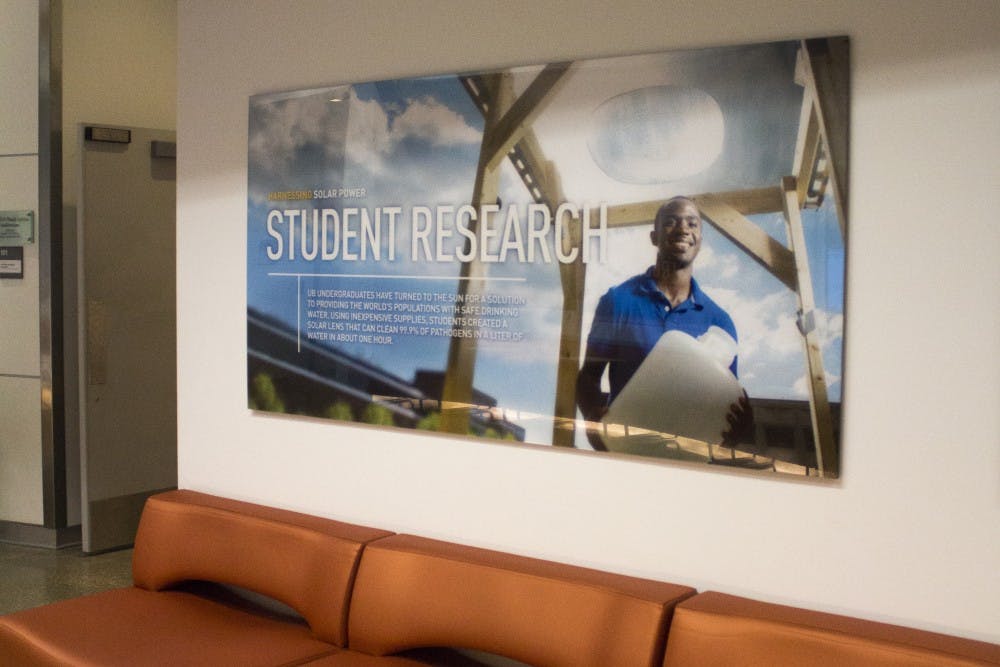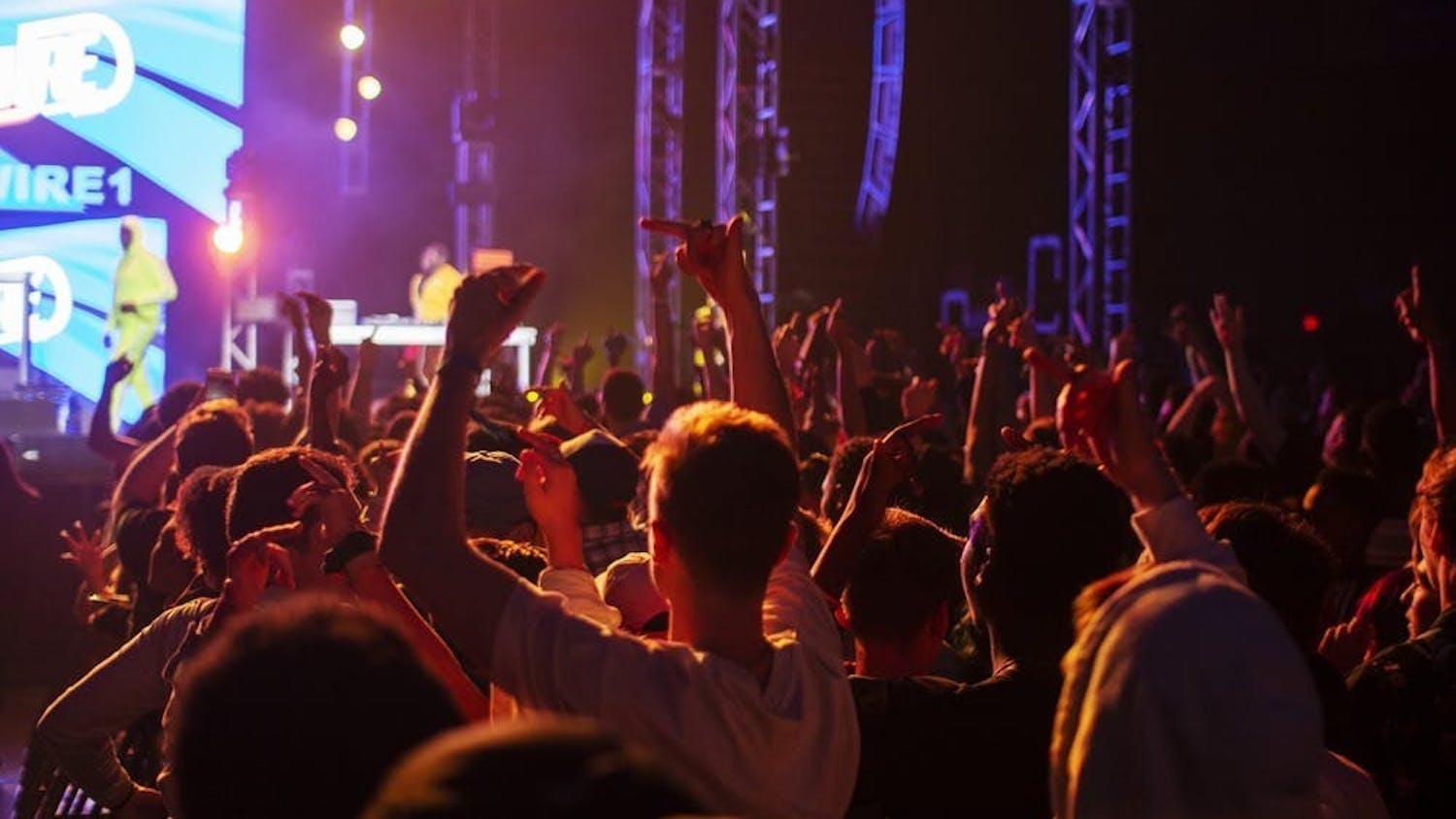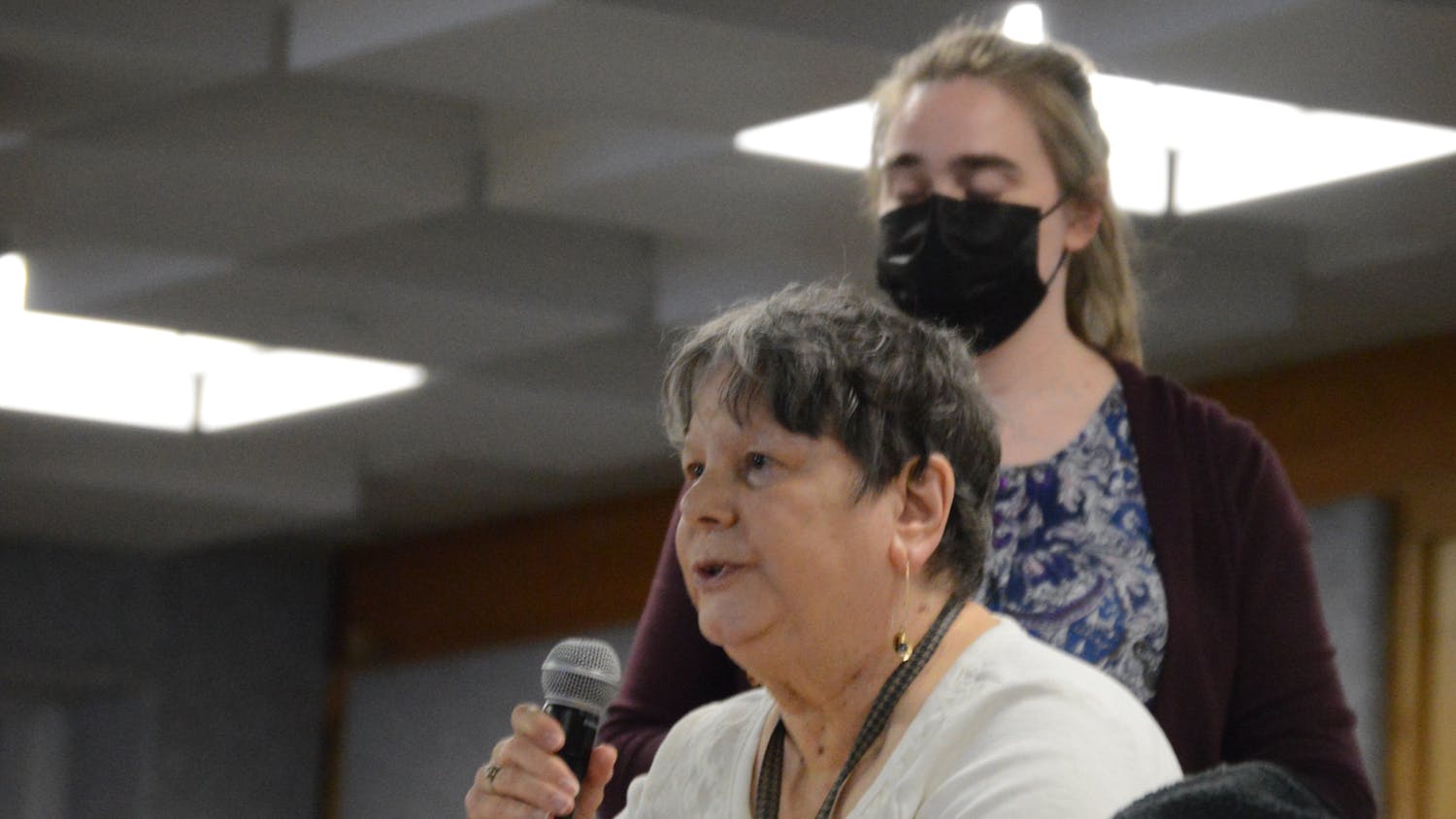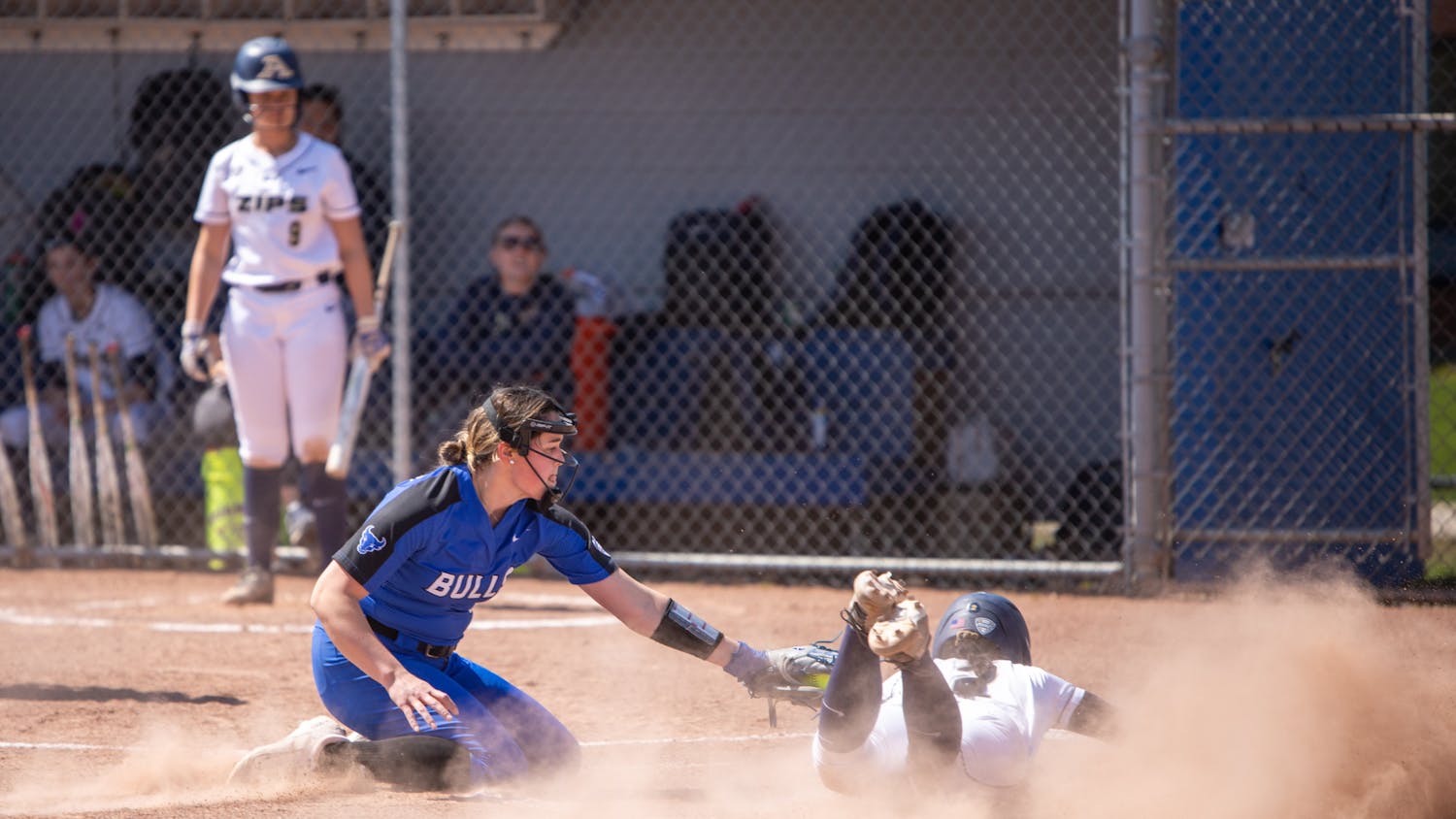Like many excited freshmen, Michael Kuczkowski hurriedly clicked through all the rules and regulations on the UB website so he could complete his enrollment process for the start of the Fall 2016 semester.
It was a giddy time for him. He was excited to sign up for his political science major, explore UB’s numerous clubs and start his college experience.
As he scrolled through and rapidly hit “accept,” he never considered what powers he was granting UB or that he was – as UB argues – giving the university the right to use his image.
“I just clicked the ‘I accept’ box and didn’t click on any other links to read about UB’s policies,” Kuczkowski said. “Filling out all that paperwork is tedious and I think most people don’t pay attention to what they’re actually agreeing to.”
Among the rules and regulations every freshman clicks and has to accept is the following statement: “Photographs of University events and members of the campus community are taken regularly, and are subsequently displayed in various media. If you do not want your picture used in this manner, please advise the photographer.”
The paragraph, administrators argue, means that if a UB photographer takes a photograph of Kuczkowski or any other student on campus, the image can appear in campus ads, brochures, billboards and even elevators. The university argues it doesn’t need individual permission because the paragraph grants it.
“I think that they could explicitly explain their policy better,” Kuczkowski said.
He added he thinks the university should “have a separate waiver explaining photo and video regulations so that students actually know what they’re agreeing to.”
That’s what other prominent universities like Brown and Northwestern do.
At Northwestern, photographers are required to have written permission from any recognizable person in a photo with intended use in university web and print publications.
“All photographers taking photographs on University property or of University events must obtain appropriate signed release forms from any student, faculty member, staff person, or member of the public who is visibly recognizable in the photograph.”
At UB, students don’t always know photographers have taken a photo of them since many photographers use long lenses. And once a photo is taken, students have no say in how their images are used.
Sometimes, images are used out of context.
In a March ’16 story called “Face Value,” The Spectrum spoke to Angel Cardona, a junior communication major, whose picture is on the front of a transfer student brochure. Cardona, however, is not a transfer student; he only learned his photo had been used when students stopped him in the halls asking him about how he transferred to UB.
Matt Vanderwerf is shown decked out in UB garb on a banner encouraging UB students to “stay longer” on the walkway from Clemens Hall to Lockwood Library. Vanderwerf dropped out after only a few weeks at UB.
Several other students whose images are on banners, elevators and brochures told The Spectrum that UB had not contacted them about using their images and that they were surprised to see enormous images of themselves on elevators, in hallways and on promotional materials.
Mickey Osterreicher, General Counsel for the National Press Photographers Association, thinks UB is treading in a gray zone of fair use of images.
“If the university is using student pictures for commercial purposes, they need a model release or the student’s consent,” Osterreicher said. “UB is a public place, so the school has the right to take pictures on its campus. But, if the university is using these pictures to promote [departments and university organizations] through marketing campaigns, it’s wrong that students aren’t being asked formally.”
Osterreicher argues that if UB falsely represents who a student is, the student has a case to ask for compensation for the use of the image or the removal of the image.
“The student that they used for the transfer booklet is being falsely advertised since he was never a transfer student,” Osterreicher said. “They have some ill-founded belief that because someone is on their campus they can take their picture. What if someone is just visiting and their picture is taken and then used for an advertisement? Because UB isn’t asking students’ permission they have no idea if the images they’re using are of actual students.”
In some cases, the university does reach out to faculty for recommendations on students to be featured on posters or advertisements.
Deshawn Henry, a senior civil engineering major, appears on a poster in Davis Hall and on UB engineering pamphlets displaying student research.
Henry researched a groundbreaking method for third-world countries to treat water. UB wanted to document the successful project and use it as a marketing tool.
“The university contacted my professor and then he contacted me and asked if this was something that I’d want to do,” Henry said. “Since it helps promote UB in a positive way I didn’t mind it.”
The project was important to him and he was pleased to have the chance to share his experiences. He also thinks being African American helped in his selection.
“I feel like since I’m a minority, they probably saw it as an opportunity to showcase their diversity along with the research students can participate in,” Henry said.
The Spectrum questioned why UB doesn’t ask students to pose for specific images. UB Spokesperson John Della Contrada says some pictures are posed and others are organic.
“Students who pose for photos are in direct contact with the photographer,” Della Contrada said. “The photographer’s contact info is typically given to the students when the photographer is arranging the photo shoot. When photos are taken in public spaces or at public events, students can inform the photographer at that time that they prefer their images not be used.”
Henry thinks the way UB approached him was appropriate and that officials should always ask permission before using a student’s image in a bold way.
“They should definitely be asking students because there are some people who might feel uncomfortable with their image being used like that,” Henry said. “If you want to promote something by using a student’s image, I feel like it’s the right thing to make sure it’s at the student’s discretion.”
Other legal professionals agree and think that UB should implement a separate waiver when student images are used.
Mark Bartholomew, a professor at UB’s law school, said UB’s policy is broader and more vague than the policies at other large state universities.
“Other public schools are more exacting in the terms of their consent notice by using a photo agreement waiver,” Bartholomew said. “In UB’s case, they’re telling students to opt out, but other schools require students to opt in by signing the waiver.”
Brown University’s policy states that “if a student is identifiable and their image is being used for marketing or promotional purposes,” the school needs written permission from the student.
“This applies when an individual or individuals are identifiable and “featured” — the focus of an image — for websites, publications, e-communications, social media etc. for the purposes of: promoting academic or administrative programs; promoting events in advance; fundraising; recruiting; and encouraging attendance or participation, etc.,” the policy states.
Rhode Island has different variations of photo rules at the state level, but Bartholomew argues that the premise of students’ publicity rights is still effective nationwide.
The vague wording of UB’s consent paragraph has left some students wondering who they should contact if they want to “opt out” of campus photos. The website does not offer contact information or an “opt out” choice.
Sonan Lama, a sophomore business major, didn’t know he had the option to request that the university not use his photos.
“Students should definitely know when their images are being used,” Lama said. “It’s weird that UB doesn’t put contact info on their website. They should start including it just in case a student sees their image being used and would prefer to have it taken down.”
After learning about the school’s policy, Lama said he may consider opting out so that he won’t be photographed.
Students should contact University Communications if they wish to “opt out” of having their picture taken or remove an already published picture, according to Della Contrada.
“We recognize that this is not always an ideal situation, which is why [we are] updating current practices so that members of the campus community are more aware of UB’s photo practices and have more opportunity to select how their images are used,” Della Contrada said.
Unlike regular UB students, all student athletes in the Mid-American Conference have to sign a photo waiver through the athletes’ partnership with SIDEARM Sports Services.
The policy states that “any public information an athlete discloses, including pictures becomes public can be used for online and offline promotional or commercial uses in any and all media.” This protects the athletes’ privacy and publicity rights and gives the school permission to market their images.
Bartholomew says that a student’s publicity rights could be violated by marketing without consent. But, if there is no emotional or financial damage resulting from the image use, UB is not at fault.
“For student athletes, they can argue that they should be getting paid for their images, but for an average student I don’t see any harm being done,” Bartholomew said. “It’s too murky of an area to try and draw any legal complaints. Technically the school has gained the student’s consent, but their policy could be worded better.”
Della Contrada released a statement indicating UB’s plans to update the university’s photo practices. The Spectrum’s original story wasn’t the catalyst for the policy’s change, but helped in addressing current issues.
“The story was not the impetus for University Communications’ review of UB’s photo practices,” Della Contrada said. “University Communications has been reviewing photo and video practices at other universities for more than a year, with the recognition that UB's current practices need updating to reflect changes in the digital and social media landscape.”
The new policy will give students more options if they choose to opt out of university photo practices.
“The university’s current photo/video practices are consistent with state law and SUNY policy,” Della Contrada said in an email. “As part of its continual implementation of contemporary communications best practices, University Communications is in the process of updating its practices to address the usage of photos and video in digital and social media.”
UB’s updated practices will give students the opportunity to opt out of having their image used for specific marketing purposes, according to Della Contrada. The university aims to implement the updated practices during the 2017-18 year.
“To update UB's photo procedures and practices, University Communications is reviewing best practices at other universities and conferring with UB's Student Life office,” Della Contrada said. “The new practices will then be reviewed by UB's legal counsel and the university's policy committee.”
Della Contrada did not specify how the policy will work and if students will be able to opt out of having pictures taken overall, or just for marketing purposes. He also added that University Communications has never received a complaint about a photo that was used and people have requested beforehand that photos not be used, and those requests have been honored.
Lama is thrilled the university is making changes and hopes it will help students understand their rights.
“I think it’s a step in the right direction,” Lama said. “Students should be able to decide if their images can be taken and how they’re used by the school.”
*Editor's note: The original article said the university aims to implement the updated practices this fall.
Max Kalnitz is the senior arts editor and can be reached at max.kalnitz@ubspectrum.com.





